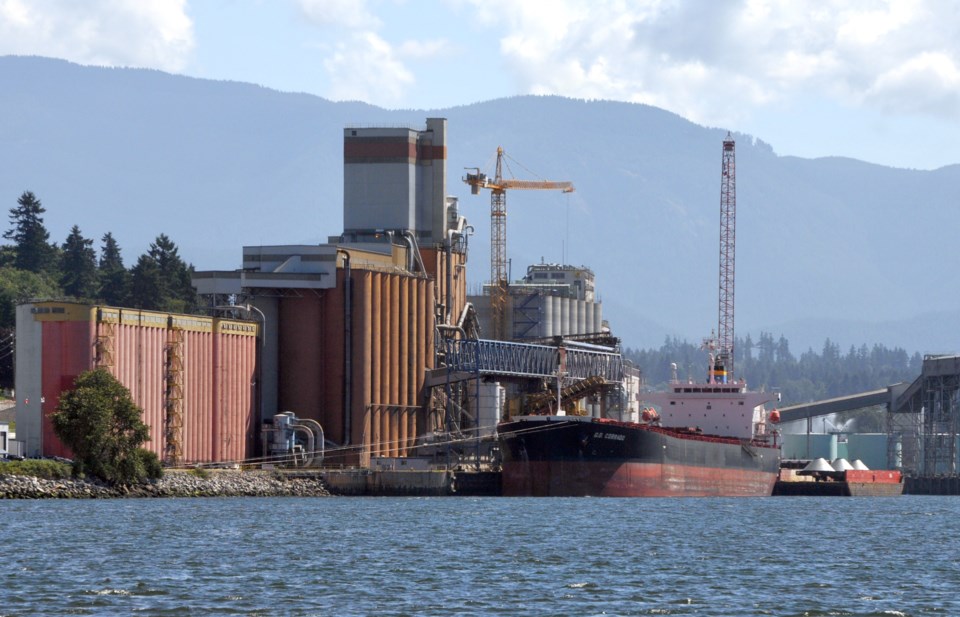Exports through the North Shore’s export terminals continue to hum despite some commodities being whipsawed in global trade disputes.
Mid-year stats released by the Vancouver Fraser Port Authority on Thursday show canola exports dropped by more than 12 per cent in the first half of 2019 compared to the year before.
In March, China banned imports from two Canadian canola exporters, including Richardson International, citing concerns about pest infestations, although experts in geopolitics say it was likely a pressure tactic in broader diplomatic and trade tiffs.
Whatever the cause, the volatility is being felt, said Robin Silvester, Port of Vancouver president and CEO.
“We’re seeing a local example of some of the trade changes Canada, the U.S., China and the world are grappling with. Volumes are a bit down,” Silvester said, adding it could have been a lot worse had canola growers not scrambled to find other buyers for their product. “But the fact that it is down shows these trade spats do have an effect. It’s tough when you’re in the canola export business and China starts making it difficult.”
But despite some pain in the canola industry, the grain terminals themselves have been no less busy. Wheat exports were up 22.4 per cent over the same period last year and specialty crops 34.2 per cent, the mid-year stats show.
“It’s a story of swings and roundabouts,” Silvester said.
Grain exports are likely only to increase in 2020, as the massive new G3’s massive new terminal at the foot of Brooksbank Avenue is nearing completion, Silvester said.
“Everything we’re hearing is they’re on track for their first grain shipments in the first half of next year. It’s really pretty exciting,” he said.
When G3 comes online, the volume of goods through the North Shore’s terminals could overtake the amount shipped through the entire Port of Montreal.
“And Montreal is the second largest port in Canada,” Silvester said.
The overall volume of goods moving through the port in the first half of 2019 was 72,498,360 tonnes, up 0.5 per cent from the same time last year.
Metallurgical coal, which is handled by Neptune Terminals, is up 7.2 per cent for 2019. Potash and potassium-based fertilizers, which Neptune also loads for export is up 27.3 per cent.
The port is still planning to expand rail capacity to the North Shore by upgrading the 3.4-kilometre Thornton Tunnel under Burnaby, although likely that will take years to complete, Silvester said.
And Silvester said North Shore residents and visitors will soon notice work being done on a massive environmental restoration project off Maplewood. The plan is to recreate intertidal habitat in a dredged former log basin.



